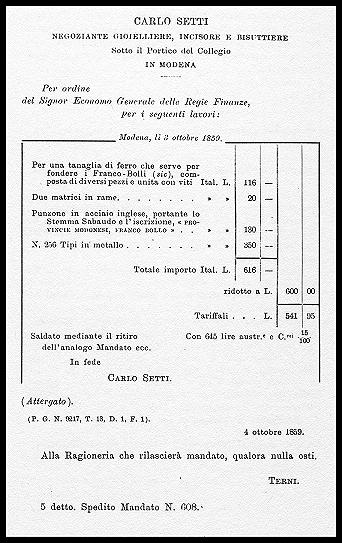
Fig. 1: the invoice of the engraver Carlo Setti
(from "I francobolli del Ducato di Modena", di E. Diena, 1894)
The issue - general introduction
As written in the
historic introduction, the Modena Duchy too got reunited to the Sardinia Kingdom.
So, the postage stamps too must be changed to eliminate any remaining of the
past dominion. At the beginning the Sardinian stamps were supposed to take the
place of the Duchy ones starting September 1st 1859.The quantity delivered from
Turin were nevertheless insufficient to cover the forecasted needs. Other pieces
were asked that did not arrive. For this reason and may be for other not so
clear of politic nature and convenience, the decision was to issue a special
set with the same values of the Sardinian issue. But because the confusion is
a peculiarity of the italic character, in some territory of the Modena land
beyond the Appennini mountains, the Sardinia stamps were put on the market...
At the same time the goldsmith and engraver Carlo Setti was given the responsibility
to implement the stereotypes of the new provisional issue.
Setti completed his work. I show for curiosity here the final engraver invoice
(Fig. 1).

Fig. 1:
the invoice of the engraver
Carlo Setti
(from "I francobolli del Ducato di Modena", di E. Diena, 1894)
The stamps
representing the Sardinia coat of arms, were printed by the Carlo Vincenzi typography
from Modena, who provided also the paper, machine made, very thin (often almost
transparent) and not watermarked. Once again I leave to the expert words of
Emilio Diena the stamp description: "It measures 19,5 x 22 mm. The Savoy
coat of arms, surrounded by the SS Annunziata collar with on top the royal crown
and contained between an oak and a laurel shoot, is inserted in a rectangle,
carrying to the left "PROVINCIE", to the right "MODONESI",
on top "FRANCO BOLLO", in small capital characters. As for the Duchy
stamps, at bottom a space was left between two small corner ornaments, where
small non capital characters were supposed to be inserted for the definition
of the value; these were kept in place by a line below that completes the rectangle".
These are the values that compose the issue:
|
5 centesimi
|
Green
|
|
15 centesimi
|
Brown, 1st
printing
|
|
15 centesimi
|
Gray, 2nd
printing- not issued -
|
|
20 centesimi
|
Slate violet
- 1st printing
|
|
20 centesimi
|
Lilac gray
- 2nd printing
|
|
40 centesimi
|
Carmine pink
|
|
80 centesimi
|
Orange bistre
|
To be
noticed the 15 centesimi value that was prepared despite the fee change from
15 to 20 centesimi; for this reason its great rarity as used (always together
to other values); its second printing run was not even distributed. A value
of 10 centesimi was foreseen too, later on not made (probably the 15 centesimi
was done exactly at its place).
Two typographic printing compositions were made with 120 samples, disposed in
4 groups of 30 pieces (6x5). As for the Duchy issue in this set too there was
an inter-space that separates the groups. It's about 1 mm wide and does not
present internal lines (Fig. 2). With the first composition were printed
the 5, 20 (first issue) and the 80 centesimi, while with the second one the
15, 20 (second issue) and the 40 centesimi.

Fig. 2: the
center of the sheet of 240 samples
(from "Modena - francobolli ed annullamenti", P. Vaccari editore,
1985)
The printing, not really of great quality, created several missing parts on
drawings and on the values of the lower label that presents itself often with
characters partially if not completely missing or deformed, missing dots etc..
True mistakes of typographic composition too are not missing. Always in the
lower labels, even if in less quantity respect the Duchy issue.
From February 1860
in the mean time the Sardinia stamps were distributed. The Provisional Government
pieces usage continued until the February end, giving birth to interesting mixed
combinations.
Between the varieties to be outlined, some rare double printing. Of all the
value 120,000 pieces were printed (for the 15c. this quantity is for 1st and
2nd issue together).